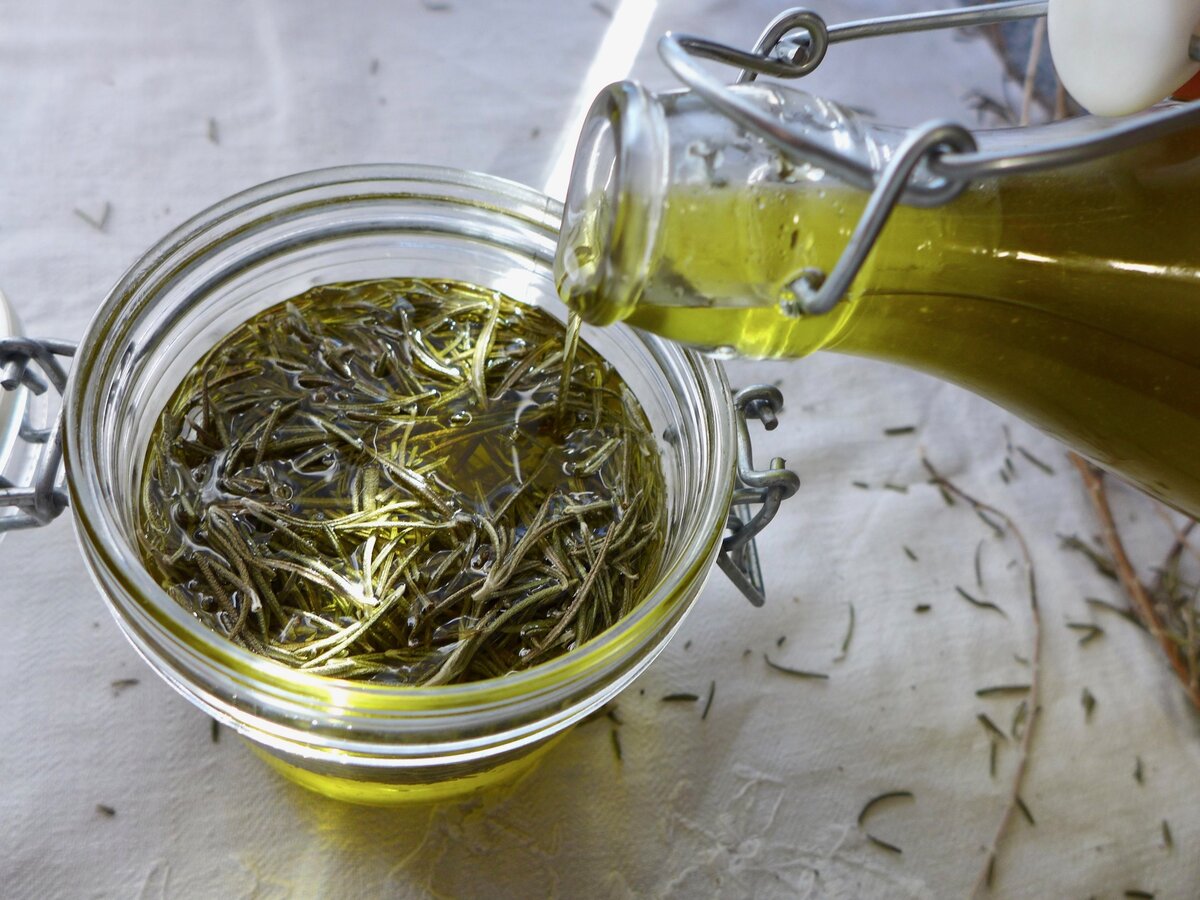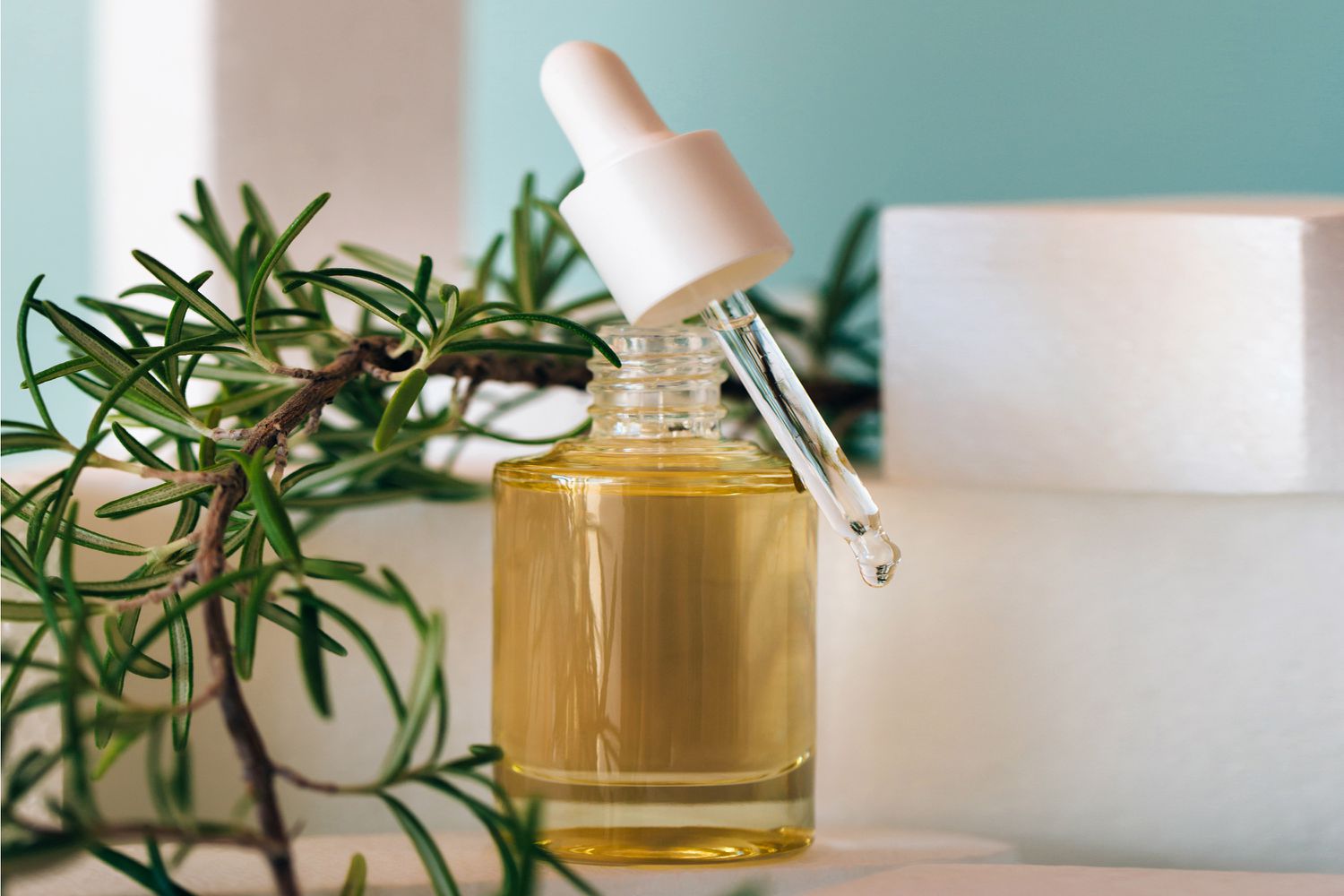Home>Gardening Techniques>DIY Projects>How To Make Rosemary-Infused Olive Oil


DIY Projects
How To Make Rosemary-Infused Olive Oil
Modified: January 30, 2024
Learn how to make your own DIY rosemary-infused olive oil with this step-by-step guide. Elevate your culinary skills and impress your guests with this flavorful homemade creation.
(Many of the links in this article redirect to a specific reviewed product. Your purchase of these products through affiliate links helps to generate commission for Chicagolandgardening.com, at no extra cost. Learn more)
Table of Contents
Introduction
Are you looking for a simple and delicious way to elevate your cooking? Look no further than rosemary-infused olive oil. This aromatic and flavorful oil adds a touch of sophistication to any dish, from salads to roasted vegetables to grilled meats.
Not only does rosemary-infused olive oil bring a burst of herbal goodness to your meals, but it also has a host of health benefits. Rosemary is rich in antioxidants, which help reduce inflammation and boost the immune system. Olive oil, known for its heart-healthy properties, contains monounsaturated fats that can help lower cholesterol levels.
In this guide, we will walk you through the step-by-step process of making your own rosemary-infused olive oil. By following this DIY project, you’ll have a jar of homemade oil that you can use in your favorite recipes or give as a thoughtful homemade gift.
Before we get started, make sure you have fresh rosemary on hand. You can grow your own rosemary plant or purchase it from a local grocery store or farmer’s market. It’s always best to use fresh herbs for optimal flavor and aroma.
Are you ready to embark on this flavor-packed journey? Let’s gather our ingredients and supplies and get started on making rosemary-infused olive oil!
Step 1: Gather Ingredients and Supplies
Before you begin infusing olive oil with rosemary, it’s essential to gather all the necessary ingredients and supplies. Here’s what you’ll need:
- Extra virgin olive oil: Choose a high-quality olive oil that has a smooth and fruity flavor. The amount you’ll need depends on the size of the container you’ll be using.
- Fresh rosemary sprigs: Aim for about 2-3 sprigs of fresh rosemary. Make sure the sprigs are clean and free from any pesticides or dirt.
- Container or bottle: Select a glass container or bottle with a tight-fitting lid. This will help preserve the freshness and flavor of the infused oil.
- Funnel: Use a funnel to pour the olive oil into the container without any spills or mess.
- Cheesecloth or coffee filter: You’ll need either a cheesecloth or a coffee filter to strain the rosemary from the infused oil later on.
- Label and pen: It’s helpful to label your rosemary-infused olive oil with the date it was made. This way, you can keep track of its shelf life.
Once you have gathered all the ingredients and supplies, you’re ready to move on to the next step: preparing the rosemary.
Step 2: Prepare Rosemary
Preparing the rosemary properly is crucial for infusing its aromatic flavor into the olive oil. Follow these steps to get your rosemary ready:
- Wash the rosemary: Rinse the fresh rosemary sprigs under cold water to remove any dirt or debris. Pat them dry gently with a clean kitchen towel or paper towel.
- Remove the leaves: Hold the top end of each rosemary sprig and run your fingers down the stem, stripping off the leaves. Discard the stems or save them for another use.
- Crush the leaves: Before infusing them with the olive oil, use a mortar and pestle or your fingers to lightly crush the rosemary leaves. This will help release their essential oils, enhancing the flavor and fragrance.
By preparing the rosemary in this way, you are ensuring that its flavor oils are readily available to infuse into the olive oil, resulting in a more robust and aromatic finished product.
Now that your rosemary is prepared, it’s time to move on to the next step: infusing the olive oil.
Step 3: Infuse Olive Oil
Infusing the olive oil with the essence of rosemary is where the magic happens. Follow these steps to achieve the perfect infusion:
- Pour the olive oil: Using a funnel, carefully pour the extra virgin olive oil into the glass container or bottle. Leave enough room at the top to accommodate the rosemary sprigs.
- Add the rosemary: Place the crushed rosemary leaves into the container with the olive oil. Gently push the sprigs down to ensure they are fully submerged in the oil.
- Seal the container: Secure the lid tightly on the container to prevent any air or contaminants from getting inside.
- Store in a cool, dark place: Find a cool and dark spot in your pantry or cupboard to store the container. The oil should be left to infuse for at least 1-2 weeks to achieve the desired flavor intensity.
- Shake periodically: Every few days, give the container a gentle shake to help distribute the flavors throughout the oil.
During the infusion process, the olive oil will gradually absorb the aromatic compounds from the rosemary, resulting in a beautifully infused oil that’s bursting with flavor. The longer you allow the rosemary to infuse, the stronger the flavor will become.
Now that your oil is infused to perfection, it’s time to move on to the next step: straining and storing.
Step 4: Strain and Store
After patiently waiting for the olive oil to infuse with the rosemary, it’s time to strain the oil and prepare it for long-term storage. Follow these steps to complete the process:
- Strain the oil: Line a fine-mesh sieve with cheesecloth or use a coffee filter placed inside a funnel. Carefully pour the infused oil through the sieve or filter into a clean glass bottle or jar. This will help remove any residual rosemary leaves or particles.
- Press gently: If desired, you can gently press on the rosemary leaves with the back of a spoon to extract any remaining infused oil.
- Seal the container: Once you have strained the oil, tightly seal the container to preserve the flavor and freshness. Use a cork stopper, a screw-on lid, or any other airtight cap that fits securely.
- Label and date: Don’t forget to label the bottle with a date so you can keep track of its freshness. A simple sticker or piece of tape with the date will suffice.
- Store properly: To maintain the quality of the rosemary-infused olive oil, store it in a cool, dark place away from direct sunlight and heat. This will help prevent the oil from becoming rancid.
By straining and storing the infused oil properly, you can ensure that it remains flavorful and enjoyable for an extended period.
Now that you have successfully strained and stored your rosemary-infused olive oil, it’s time to move on to the final step: enjoying and using it in your culinary creations.
Step 5: Enjoy and Use Rosemary-Infused Olive Oil
Now comes the exciting part – incorporating your homemade rosemary-infused olive oil into your cooking! Here are some delightful ways to enjoy and make the most of this flavorful oil:
- Drizzle over roasted vegetables: Give your oven-roasted vegetables a savory boost by drizzling a generous amount of rosemary-infused olive oil over them before baking. The oil will enhance the flavors and add a delightful herbal note.
- Toss with salads: Use the infused oil as a delicious dressing for your salads. Its aromatic taste will complement fresh greens, vegetables, and even fruit salads.
- Marinate meats and fish: Create a mouthwatering marinade for your meats and fish by combining the rosemary-infused olive oil with other herbs, garlic, lemon juice, and your favorite seasoning. Let the flavors meld together for a while before cooking.
- Use it for dipping: Pour a small amount of the infused oil into a shallow dish and serve it alongside crusty bread as a dipping sauce. The combination of the fragrant rosemary and the rich olive oil will be a hit!
- Enhance pasta dishes: Drizzle the oil over cooked pasta dishes, such as spaghetti or linguine, to give them a burst of flavor. Add some grated Parmesan cheese and fresh herbs for a simple yet tasty meal.
- Infuse other oils: Don’t limit yourself to just rosemary-infused olive oil. Consider experimenting with other herbs like thyme, basil, or garlic and infusing them into different oils such as avocado oil or sunflower oil. This will allow you to create an array of infused oils for various culinary uses.
Get creative in the kitchen and let your taste buds guide you when using rosemary-infused olive oil. The possibilities are endless, and it’s a versatile ingredient that can take your dishes to the next level.
Remember to store your homemade oil properly and use it within a reasonable time frame to ensure the best flavor and quality. Freshly infused oil typically lasts for up to 2-3 months, but it’s always best to use your senses to determine if it’s still good.
Now that you possess the knowledge and skills to make your own rosemary-infused olive oil, it’s time to get started and savor the incredible flavors it brings to your culinary adventures.
Conclusion
Creating your own rosemary-infused olive oil is a satisfying and rewarding DIY project that adds a touch of elegance to your cooking. By following the simple steps outlined in this guide, you can harness the aromatic flavors of rosemary and infuse them into high-quality olive oil.
From enhancing the taste of roasted vegetables to elevating your salads and pasta dishes, rosemary-infused olive oil brings depth and complexity to a wide range of recipes. It’s a versatile ingredient that lends its herbal essence to any dish it accompanies.
Remember to gather fresh rosemary and quality olive oil, giving attention to preparing the rosemary properly before infusing it into the oil. Allow the flavors to meld during the infusion process, then strain the oil and store it in a cool, dark place for optimal freshness.
Once your homemade rosemary-infused olive oil is ready, the possibilities are endless for incorporating it into your culinary creations. Use it to marinate meats, dress salads, dip bread, and enhance various dishes with its distinct flavor.
By embarking on this DIY project, you not only elevate your cooking but also reap the health benefits of rosemary and olive oil. Rosemary is rich in antioxidants, while olive oil contains heart-healthy monounsaturated fats.
So why not unleash your inner chef and start making your own batch of rosemary-infused olive oil today? The satisfaction of creating a homemade culinary essential that enhances your dishes is truly priceless. Get ready to impress your family and guests with the aromatic and flavorful delights that rosemary-infused olive oil brings to the table!





